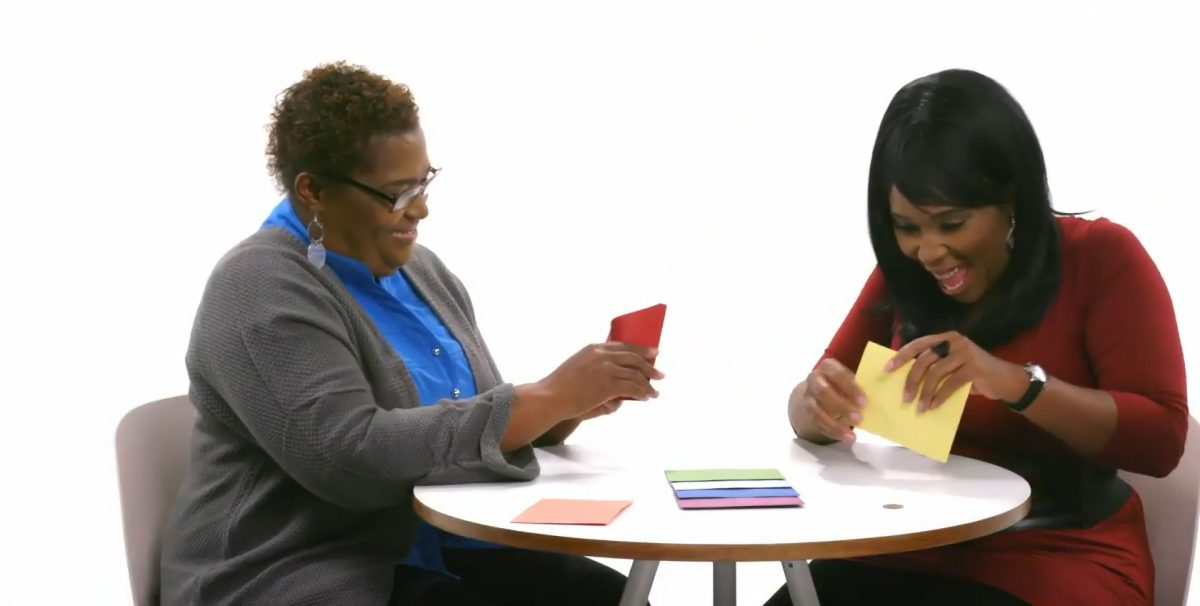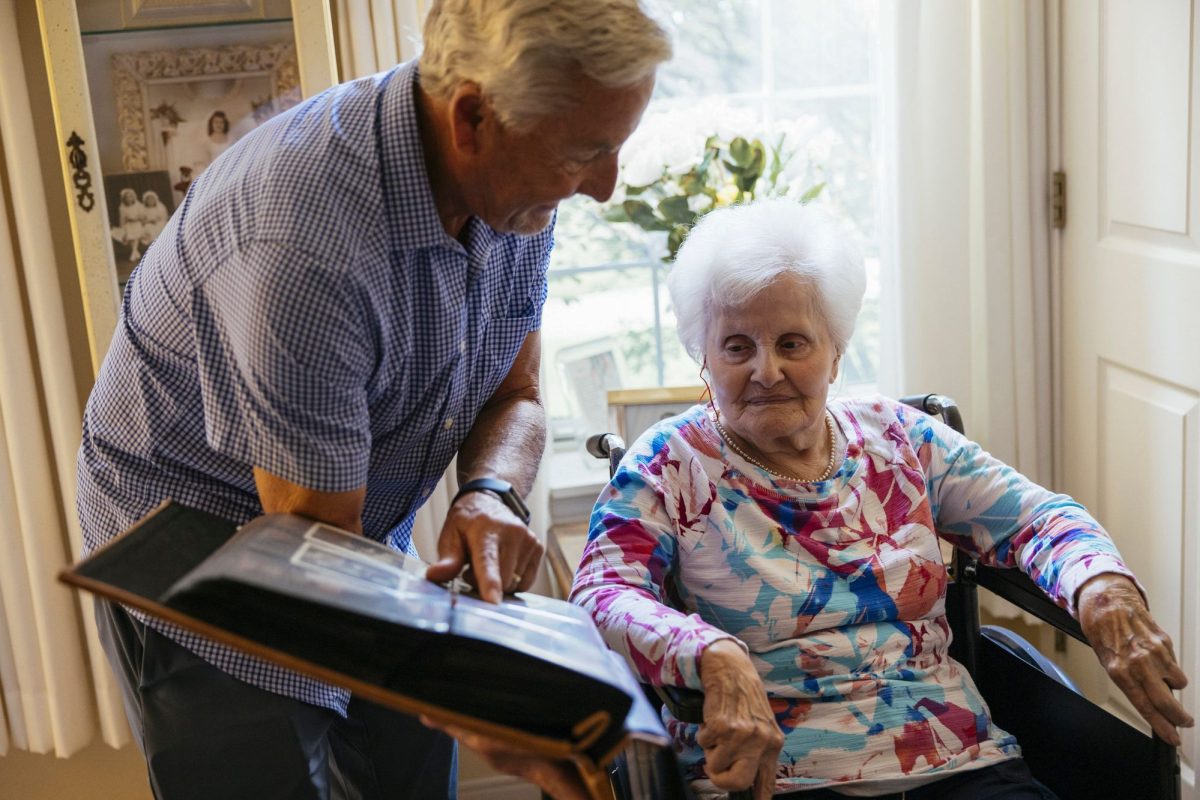Strategies for Long-Distance Caregivers

— They need special types of help due to the unique challenges
Being a primary caregiver for a family member who lives in a different city or state can feel like a full-time job, complete with its own set of stressors and related emotions.
“I think caregivers can be disappointed at times,” said Vicki Williford, a chronic care nurse in Greensboro, North Carolina. “The home health nurse comes and goes, and [the caregiver] still has another 23 hours to go.”
That’s 23 more hours to make sure the care recipient has taken medication, avoided falls, eaten healthy meals, and made it to the bathroom in time — all of which have to be supervised remotely by long-distance caregivers.
The need for non-clinical family members to provide care to aging loved ones will likely continue to rise, due to a growing population of seniors and the shortage of health care providers in America. The burden of care-giving may be further complicated by distance; a 2015 study from the National Alliance for Care-giving found roughly 25% of caregivers live 20 minutes or more from the recipient’s home.
What unique challenges do long-distance caregivers face, and how can a relationship with a health care team help overcome these challenges?
The Challenges of Caring from Afar
Nearly 44 million Americans provide unpaid care for a family member. Of these Americans, between 5 million and 7 million are doing so from a distance of one hour or more, according to a report from the Journal of Gerontological Social Work.
All caregivers, regardless of geographic proximity, are met with tasks that challenge emotions and resilience. They work to provide the best possible quality of life for a loved one in need of support. They may have difficulty accessing clinical training, balancing care-giving with a full-time job and personal life, and managing the length and scope of care-giving.
Those supporting a family member from a distance may experience added stress from coordinating logistics remotely, without the affirmations of face-to-face interactions from a health care team and their loved one.
Challenges unique to long-distance caregivers include:
- Traveling to and from the care recipient’s home
- Using technology to stay in touch
- Limited in-person communication with the care recipient
- Building provider relationships from afar
- Coordinating legal and financial concerns remotely
- Planning visits for other family members
- Keeping all parties up-to-date
- Wavering confidence about choices made for the care recipient
Digital Tools for Long-Distance Caregivers
Some caregivers may find help through digital tools that make it easier to check in on a care recipient, which can include:
- Mobile Apps – for face-to-face communication
- Smart Devices — to adjust home temperature or door locks
- Wearable Devices — to transmit vitals or call 911 in case of an emergency
- Home Cameras — to monitor activity and visitors; for keeping track of medication schedules and deliveries; providing alerts of home break-ins
Keep in mind, not all technology seems user-friendly at first, so it’s important to check in with all parties — including a health care provider — about the level of comfort using new tools.
Being Part of the Health Care Team
Many care recipients have a team of providers, such as nurses, managing multiple aspects of their treatment. Caregivers can certainly be a part of that team, even from a distance. That team can also offer support for the caregiver.
“All the research suggests that we do better with adversity by having people who are in our corner,” said Barry J. Jacobs, clinical psychologist, family therapist, and author of The Emotional Survival Guide for Caregivers.
“We don’t take over people’s lives,” he said of caregivers. “We work with them to provide support to enhance their lives to be more functional and help them live more the way they want to live.” Both the caregiver and provider need to understand the strains that each party is experiencing, which comes from clear and consistent communication. There are several ways family members can demonstrate to providers they want to be an active participant in a loved one’s care.
Building a Relationship with a Provider Remotely
- Identify a member of the family who has the capacity and availability to be granted power of attorney for medical decision-making and communication with the primary provider
- Establish the need for regular check-ins and preferred modes of communication
- Attend appointments when possible. If it’s not possible to be there in-person, try dialing in, or follow up with a phone call to the provider and care recipient
- Conduct background checks of aides who are providing in-person care
- Keep notes of changes in health or questions about the care recipient’s needs
- Make a list of medications and other treatments in order to support medication adherence and monitor changes in therapies
- Understand that a treatment plan will evolve as the care recipient’s condition changes, and be open to that change
Williford said it’s common for families to lack consensus on a treatment plan for a patient with an unexpected hospitalization, which can make a provider’s job much more difficult.
“Families come in from all these different states, out of town, and then they’re now faced with: ‘What do we do with Mom?'” she said. “They’re trying to decide, and yet the mom’s saying to me, ‘No one asked me what I wanted.'”
Having these conversations as a group can help the care recipient feel that they have agency over their treatment plan and keep everyone on the same page.
A Taste of One’s Own Medicine
Supporting a loved one from afar involves complicated responsibilities and constant communication that can prove taxing. It’s common for long-distance caregivers — especially those with less support — to feel emotionally burned out or exhausted. Being far away from the care recipient can increase anxiety about a loved one’s well being, and may be compounded by stress of periodic traveling or lack of sleep for providing care across different time zones.
Without proper self-care, caregivers may experience caregiver strain, or a feeling of burnout that leaves individuals unable to perform daily tasks or cope with feelings of anxiety.
“You know you’re experiencing burnout as a caregiver if you’re waking up in the morning with a sense of dread,” said Jacobs.
How to Manage Burnout as a Long-Distance Caregiver
- Set a cadence for phone calls
- Make time to self-reflect each day
- Take an inventory of your emotions
- Accept help when it’s offered; ask for help when it’s not
- Utilize a care team on the ground to perform in-person tasks
- Take notes during visits so there’s less to memorize
Drawing boundaries is one thing; adhering to them is another. Caregivers have to carve out time to care for themselves and get the help they need as well. Jacobs said he uses a marathon as a metaphor for care-giving.
People “need to see this as a long, arduous course for which they need to really take care of themselves along the way,” he said.
“They run past a water station at mile five and people are waving water bottles at them,” Jacobs said. “That kind of self-replenishment on a regular basis develops some sort of emotional wellness program.”
Even when distance is not a factor, caregivers are still at high risk of being overwhelmed. In fact, boundaries can be extremely difficult for spousal caregivers in particular, who feel a heightened sense of obligation for their loved one’s well-being. Spousal caregivers are at increased risk for burnout. Many of them — almost one in five — are outlived by their husband or wife, according to a 2018 study published in the journal Alzheimer’s & Dementia. Accepting an offer of assistance, even when it doesn’t seem crucial at the time, can help caretakers sustain the energy. It will needed to provide the best quality care, while still finding time to rest and enjoy life with their loved ones.
This story was originally published by Daily Nurse, a trusted source for nursing news and information and a portal for the latest jobs, scholarships, and books from Springer Publishing Company.




